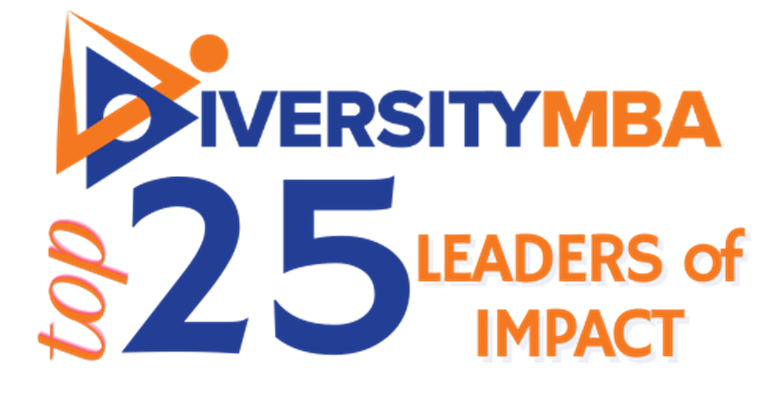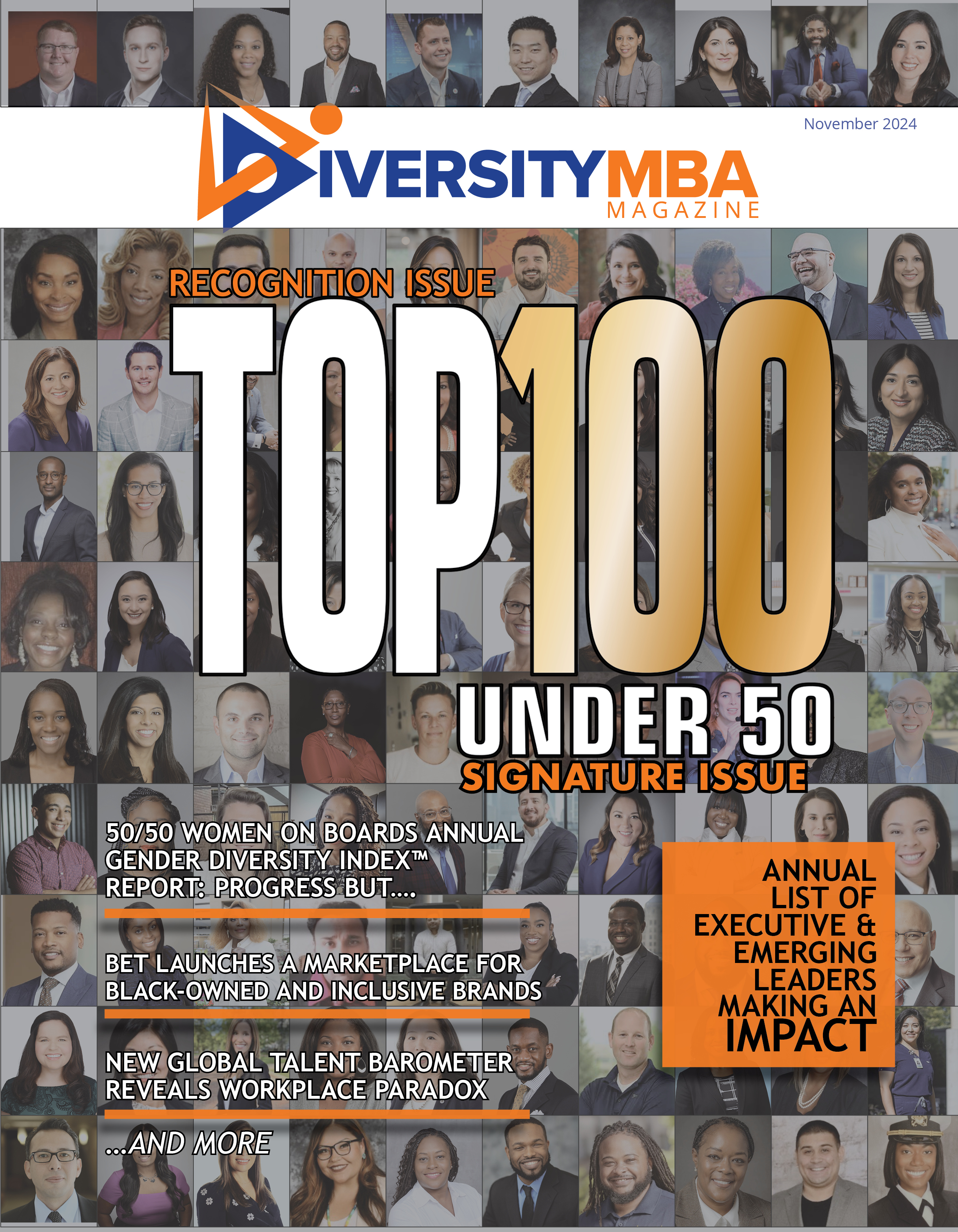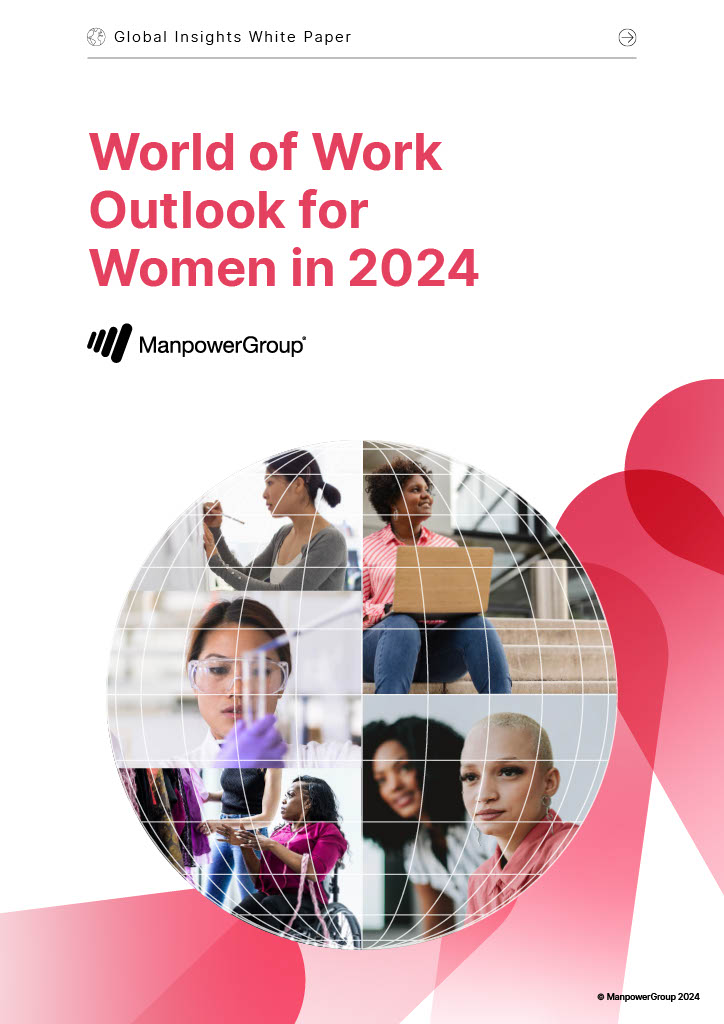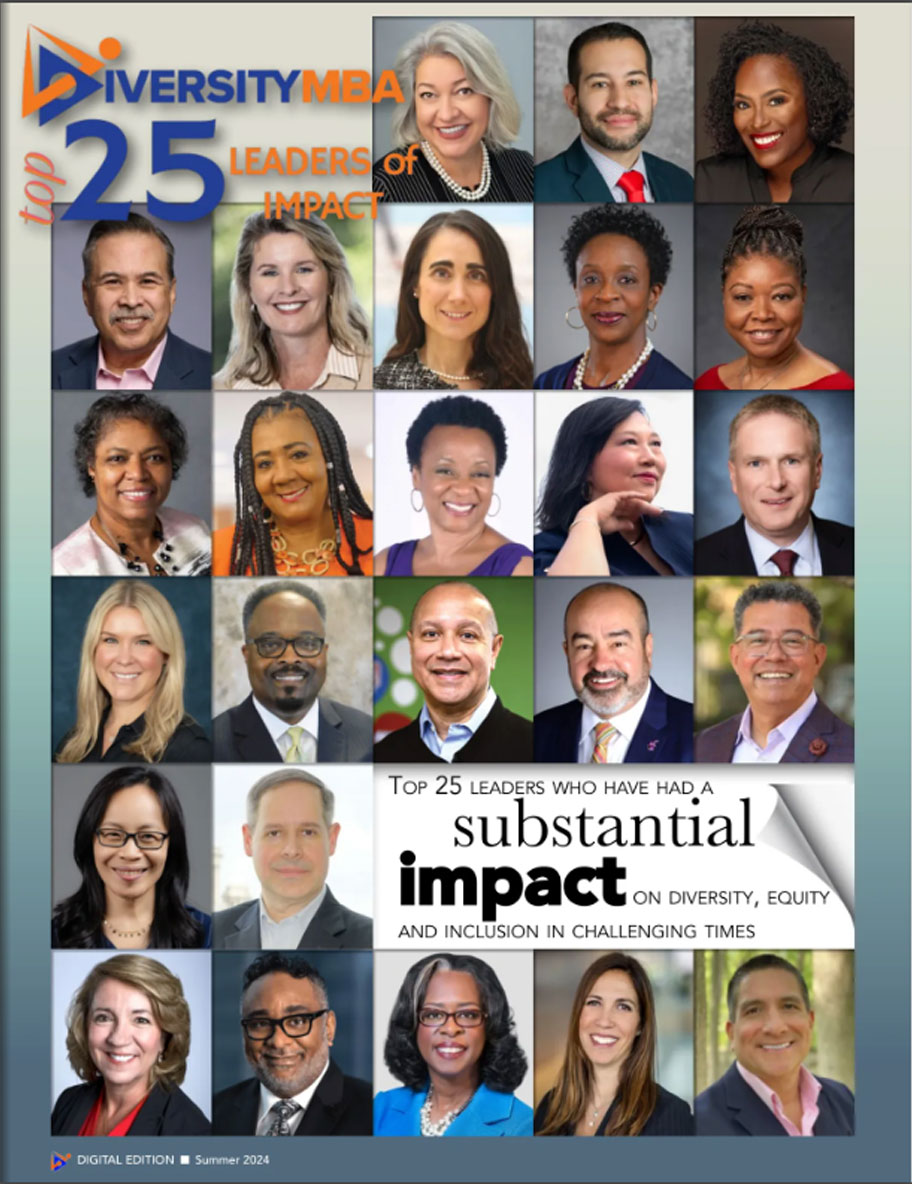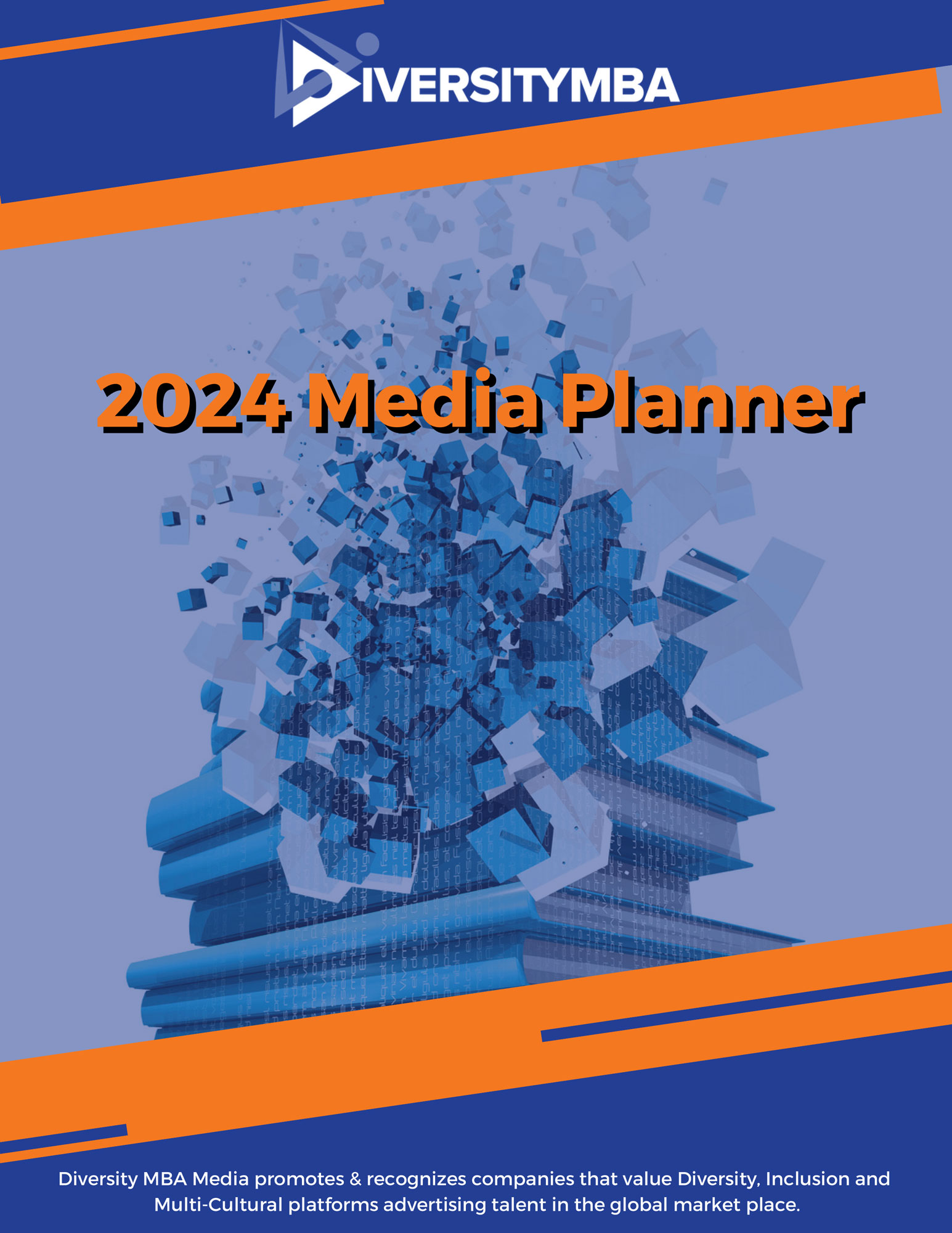Diversity MBA media hosts weekly DEI Leaders sharing insights calls as a means to provide connection and support. Our purpose has grown whereby we are gathering practices and best practices on employee engagement and leadership development. This document is only a tool. We distribute FAQs once we gather enough insights to share; (typically monthly or bi-monthly). You may add more based on your experience; send comments to pam@diversitymbamagazine.com. Thank you to all the leaders that have participated and shared. Pam McElvane, CEO & Publisher, Diversity MBA Media.
EMOTIONAL STABILITY OF DEI LEADERS
As Diversity Leader how are you balancing the pandemic and the eruption of race relations?
- Some believe it is God sent that we are dealing with two global crises simultaneously. It is forcing people to have the real race and inequities conversation that has been avoided for so long. It has become an equalizer for people who did not have the courage and/or platform to speak out.
- Those in the healthcare and services industry feel the work has not stopped; and it just increased their capacity to be responsive to both crises. It is taking both a physical and emotional toll.
- DEI leaders are cautioned about white tears of fragility from white leaders that may potentially derail conversations. They want their leaders to be uncomfortable with sharing their truths.
- While many folks are comfortable discussing issues surrounding women and the LGBTQ+ community as a separate topic, but conversations surrounding injustice towards black and indigenous populations make people uncomfortable. We must acknowledge then deflect white fragility.
- While at home creating moments and spaces to enjoy children and family.
- Increased exercising personally and including grandchildren in walking exercises to enhance family time.
- Clinging to faith and reaching out to friends; and spending less time on the computer.
- DEI leaders are equally concerned with how to keep the momentum and energy going when events begin to slow down.
- Diversity leaders must demonstrate their skin in the game to get everyone comfortable with trusting leaders. Commitments must be reaffirmed while enhanced and new D&I strategies are being launched.
- Most DEI strategies include representation goals, philanthropy, and community. These areas have become increasingly important.
- DEI leaders must now deal with employee emotions with the intense time around elections. Yet another dynamic issue to manage. Leaders are preparing to do what they can from a non-partisan position to provide education.
ENGAGING REMOTE WORKFORCE
How are organizations managing the pandemic and the explosion or race relations, impacting mental health; home-work environments, etc.?
- Mental health awareness among Black employees has increased to more almost half in some organizations. Half of the Black population in some organizations are utilizing the EAP grief counseling services.
- Clorox has expanded EAP services and mental health services and to hire more therapists of color.
- Gearing up mental health resources has becoming a huge concern with the increased domestic violence, suicide attempts and other violent activities. Companies are putting resources into keeping both current employees and furloughed employees safe.
- While sometimes exhausting, having daily huddles with both zoom and/or just teleconferencing. Teleconferencing provides more of a safe place for voices to be heard.
- Now the school restarting; employees are having a new challenge with managing online school while working during same hours.
- Global organizations like VF Corporation are opening main hubs for re-entry in phases across the world. (4-6 weeks waves). They are proactively managing PTO to be ahead of burn-out and any other potential issues impacting workforce. Keeping employees first.
- Headquartered centric locations still are not open for people gathering. Less than 10-15 percent of HQs have workforce returning.
- Employee lead initiatives are organically growing. A great way to keep the momentum going
- Creating spaces for psychology safety for all groups is a best practice.
INCLUSIVE LEADERSHIP INITIATIVES
What is the expectation of senior leaders and how are they engaging?
- Reaffirmation of diversity equity and inclusion commitments are coming down from the top. Task forces are formed to review and update DEI strategies.
- Some companies’ senior leaders are actively engaged in their desire to learn, lead and change. They believe they can contribute to more than one thing at a time.
- Companies instituting Anti-Racism pledges among leaders must ensure there is action behind the pledge, specifically accountability.
- Horizon Blue Cross Blue Shield, NJ has a new CEO who has put out a statement and made a pledge towards combatting racism considering George Floyd’s murder. Employees have been encouraged and are providing feedback on the pledge and statement.
- DEI leaders are continuing the conversations with senior leaders on how to reshape, increase, improve and evolve to doing things differently allowing for the appropriate resources.
- Atrium’s CEO is engaging in town halls with African American employees to encourage empowerment and to experience what his workforce is experiencing. Bold and courageous movement.
- CEOs are giving permission for leadership support and/or creating accountability around the expectation to lean into the courageous conversations with action.
- Developing a more sustained model for leaders to be better allies, while being accountable for their action or inaction.
- DEI leaders are involved in either creating or expanding leadership development initiative to teach the organization to move to action. Answering the question of HOW?
- Clorox created functional task force to keep all leaders connected to the broader strategy being created.
- CEOs are creating videos and placing them on both internal and external outlets. Premier Health created a DEI strike force to combat racism.
COURAGEOUS CONVERSATION EXPLOSION
How are you encouraging inclusion and creating a sense of belonging?
- Here are some insights on the engagement of courageous conversations. 88 percent of companies are leveraging ERGs to initiate or manage; 48 percent of companies are engaging their CEOs in fireside chats; 38 percent of companies are having racial justice talks by ethnicity. Creating consistent communication via town hall meetings, fireside chats and talks by ethnicity are the leading best practices in this new normal environment.
- It is imperative that leaders show up to various types of meetings where the conversations are hosted and bring their authentic selves to listen and learn.
- Courageous conversations should include a foundational context to ensure it is comprehensive and inclusive to initiate action. For example: infusing allyship into the conversation to make listening easier and digestible. Also, leaders of color sharing their stories of micro-inequities at the town-halls helped connection.
- Gathering immediate insights after the meetings should be required. Companies are using surveys with 5-7 questions and finding most employees are responsive.
- Polling has become another best practice to maintain pulse on how employees are feeling. Pre-polling allows companies to measure feelings before the conversations. Companies are seeing positive attitude shifts after the conversations.
- Digital townhalls have allowed employees to include their families on the listening part of the townhall. So now families can engage and share in understanding the work issues.
- Some companies are focusing town-halls on specific dimensions of diversity, i.e. persons with disabilities. The beauty of this, it allows for deeper conversation and truth to reality.
- Regarding race relations, D&I departments have been hosting hour and a half-long listening sessions. These sessions are mandatory and have been taking place over a five-week period. All employees are being encouraged to express themselves.
- Many are uncomfortable discussing white privilege so discussing white supremacy is going to be even harder. But, reinforcing that these are structural problems is important.
- Companies are making great first steps in opening authentic courageous conversations
- and DMBA wants to acknowledge and celebrate these actions but also push forward towards understanding and demystifying racism, as well as making sure companies continue to work towards anti-racism. There needs to be a continuum not just reactions (even though there is always something to react to. Especially on local levels if not national).
- Some D&I leaders are concerned with how to make these conversations more inclusive without derailing from the topic at hand. This can be done by either a) adding these groups thematically into your conversations to generalize them a bit more or b) shift the conversations to make them broader. Restate your themes and make the shift sooner rather than later but be sure not to minimize the black experience. Express that all stories are important and relevant. Do not be afraid to address realities. D&I are level setters right now. Discuss how these levels of racism affect everyone. Shift and clarify but do not change the focus (racism and white supremacy). While holding courageous conversations you must be inclusive and make sure everyone feels welcome sharing to make sure these conversations continue.
- Very specific conversations are occurring around safety and support.
- Atrium Health created Journey to Justice campaign that includes racial justice toolkit, supporting beyond the conversation with activities. They are also measuring employee conversations through polling, number of leaders actively engaged etc. Their theme across the system is “ it not ok to be silent.”
EMPLOYEE RESOURCE GROUPS: THE SUPER GROUPS
How are you managing your workforce now that it is primarily remote?
What practices should be implemented to ensure productive remote workplace?
- DEI leaders are engaging ERGs to support their shift by bringing anti-racism forward into their D&I strategies.
- Clorox has not engaged their ERGs but their Leadership councils to create a continuum of support and resources. They approach these issues in three buckets: conversations, resources, and training. It is integrated plan to sure all aspects are covered.
- ERGs have created book clubs to further engagement and learning.
- Companies must remember colorism and racism are international issues. This is were global inclusion networks are most helpful in creating regional initiatives for inclusion.
- PNC Financials LGBTQ ERG just created their own credit card.
- Clorox is diving into intersectionality and creating tools for leaders to host sessions.
- Diversity sites are being expanded to include more communication on what ERGs are doing to advance conversations on racism, privilege, white fragility and more.
ENHANCED & STRATEGIC COMMUNCATIONS
What are some of the strategies and/or initiatives you are utilizing to enhance communication among all stakeholders?
- Internal communication – message from the president and CEO was created to share the internal commitment in dispelling anti-racism. It is important that these leadership messages are followed up with action plans.
- Corporate communication teams are working closely with DEI teams and implementing platforms of communication to engage all learning styles. Visual, Auditory and Kinesthetic learners are now all engaged. Definitions below:
- Visual learners need to see something to learn best. if you fall into this category, you will benefit from the following activities: copying from the board, writing, and rewriting notes, highlighting key information in the textbook, making mind maps, using flashcards, and watching videos. You can also learn easily from graphics, posters, charts, maps, and photographs.
- Auditory learners need to hear something to learn well. If you fall into this group, doing the following will help you learn more easily: pay attention, make recordings of learning material, repeat facts with your eyes closed, ask questions, explain the subject matter to another , person, participate in group discussions. Auditory learners like to listen to audio books, lectures, debates, and music.
- Kinesthetic learners need to touch or experience something to remember it. If you fall into this classification, you may have faced greater challenges in the remote environment. Most formal learning is not set up to include physical movement and activities. Nevertheless, if this is your strength, you could benefit from the following activities: making models, giving a demonstration, participating in a simulation, and working on the floor, bed or any place that feels comfortable.
- Newsletters are being published in multiple languages with info graphics, daily update alerts for employees and community.
- You can also relate to physical activities, direct involvement, hands-on activities, displays, demonstrations, and experiments.
- Websites are being enhanced to be engaging to external audiences by allowing folks to login and share ideas on how to support the community. It is anonymous for honest sharing.
MANAGING THE CURRENT SOCIAL & RACIAL JUSTICE ENVIRONMENT
How is DEI restructuring and/or enhancing the existing team to deal with anti-racists culture within the workforce?
- When you talk about white supremacy and privilege from a historical perspective you can acknowledge allies in history but also acknowledge the problems.
- “It is important that organizations understand that they must look at structural, systemic, and institutionalized racism as three different components,” in my opinion says Pam McElvane.
- Structural: Structural racism is when historically developed inequalities can be adopted as normalcy. It encompasses the historical framework of white supremacy. (This is what is being examined now.)
- Systemic: Concerns systems and organizations allowing racist actions behaviors and inequalities to become normalized practices and legitimized in social systems. This is where we see racism in company systems and policies.
- Institutionalized: This type of racism occurs within and between institutions. It is manifested from one institution to the next; led by persons taking advantage of their privilege. In this moment, we are faced with federal government messing with the civil liberties of all people – their right to vote.
- Companies are examining how they fare in each of these buckets. Ask: “What are we willing to systemically change?” These initiatives are being led by DEI leaders. Currently many companies are working at the very base level whatever that may be, because even with these sessions they are not really touching on individual racism.
BUSINESS ISSUES
What are some of the current business issues you are now facing and what are doing to combat and stay relevant?
- Broadening cultural competency is now a best practice. Hosting cultural competency forum with talks about covid-19 and race relations in the future. Engaging communities’ organizations in the training as well, like the chamber of commerce.
- Premier Health is hosting a virtual African American walk against healthcare inequities and racial injustice as it is important to have courage and call out bad behaviors.
- Principal Financial Group developed a guide around sensitive words and phrases. This has prompted robust discussion among employees. It is a best practice for companies to develop a guide that is inclusive of tough conversations, phrases and more. It should be agile so it can be updated regularly. (It is critical to put together guidebooks and make them available to everyone in the company. It is also important to include other groups in them (ex. Asians and Hispanics)).
- Clorox has invested $2.5m towards supporting Black business and youth. ERGs are receiving $5m to donate to organizations of their choice. They have also implemented robust bias training, and expanded initiatives to global markets.
- PNC Financial Services has committed $1B investing in anti-racism initiatives and supporting Black Businesses.
- Some companies are engaging in restructure of DEI functions and having them report to Corporate Responsibility functions to penetrate deeper into community alongside the workforce.
- Novant Health created a $10m investment for employee emergency fund.
- Healthcare organizations are deploying mobile units to reach underserved communities; they are restocking and preparing clinics for increased outbreak of COVID. All of this in event to combat social detriments of health.
- Crafting the anti-racists statement, revising policies, conducting audits, and regulating impacts that you can control is what organizations are trying to get a handle on.
- Task forces and focus groups are becoming the new way to focus on specific topics; allowing people to gain more insight on what type of business issues are developing in future.
- Companies have targeted helping employees earning lower rages. This is across industries.
- Atrium Health, as one example, has identified long term care facilities designated as COVID-19 to manage needs immediately.
- Toolkits include topics like Be curious; cultural awareness and be cognizant of surroundings; engage in intentional learning; having courage to address micro-inequities; how to stand up as an inclusive leader


